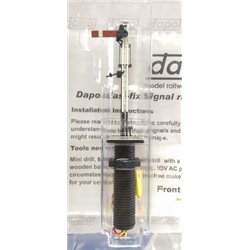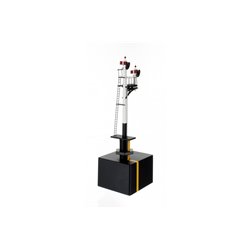Static grass puffer bottles work by manually charging model grass fibres with static electricity. When the charged...
No products
Product successfully added to your shopping cart
There are 0 items in your cart. There is 1 item in your cart.
Search Tips
In railways, what does the term 'SPAD' mean and could I incorporate this into my layout ?
SPAD stands for Signal Passed At Danger. It is a term used in the railway industry to describe a situation where a train passes a signal that is displaying a red aspect, indicating that the train should stop. SPADs are serious safety incidents and can have potentially dangerous consequences.
Usually, there are many SPAD incidents each year on the railways but the vast majority of incidents have no real cause for harm as they are generally the result of minor misjudgements of the distance to a signal and the necessary braking distance needed which can lead to minor overruns. Additionally, most overruns also occur at slow speeds.
There is a safety distance factored into the positioning of most signals which is referred to as the 'Safety Overlap'. The 'Safety Overlap' is a clear section of track approximately 183 metres in length and most minor overruns will safely come to a complete stop within this distance.
In some instances, last-chance warning signals have been installed reminding drivers of the need to stop. These are generally painted blue and have a three-aspect configuration with a red flashing light that can be activated when a driver passes a previous stop signal.
With an appropriate 'Safety Overlap' it is possible for modellers to incorporate specialist SPAD signals onto a layout in advance of points, crossovers and stations where they can warn drivers of potential dangers, adding an extra layer of realism to a layout.
Click here to receive the tips weekly in your mailbox. You can unsubscribe at any time.










